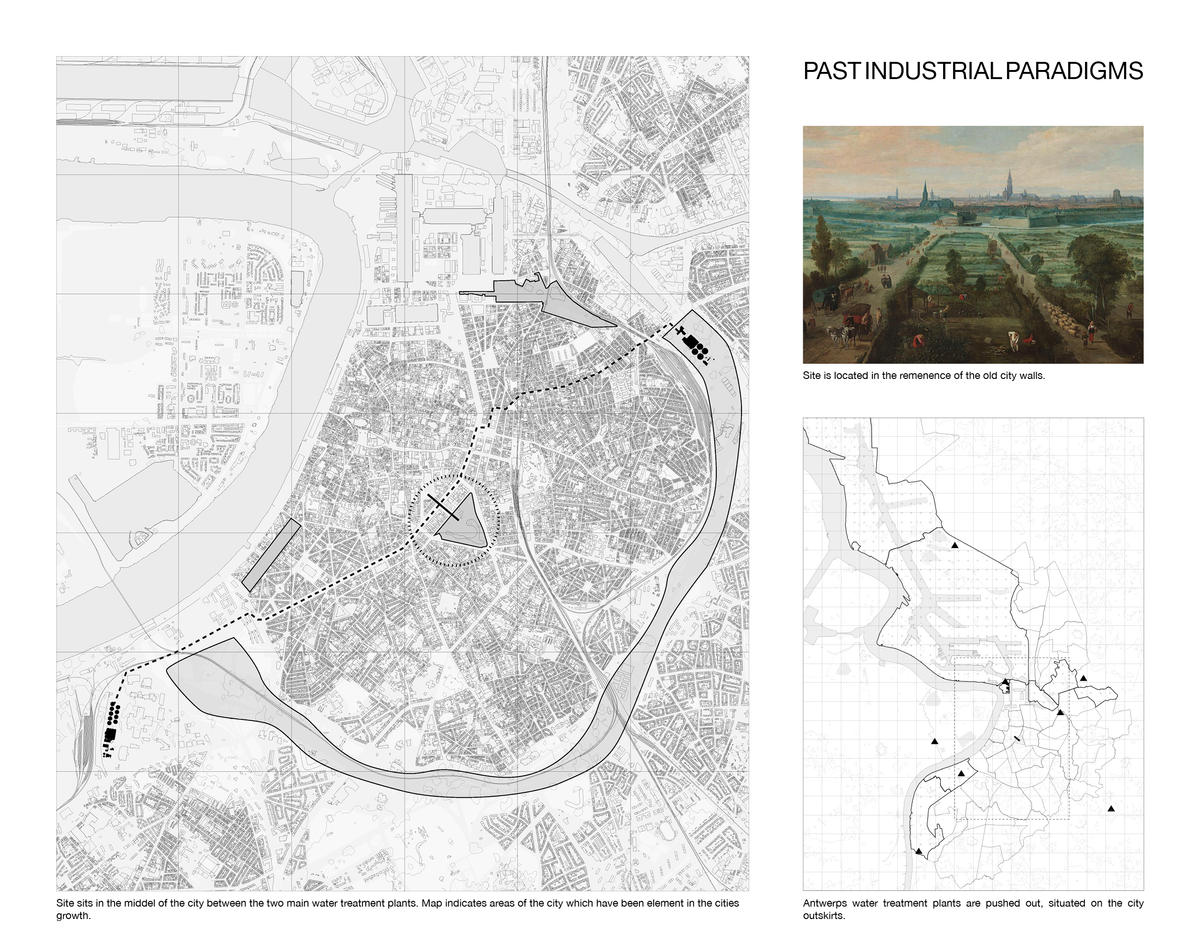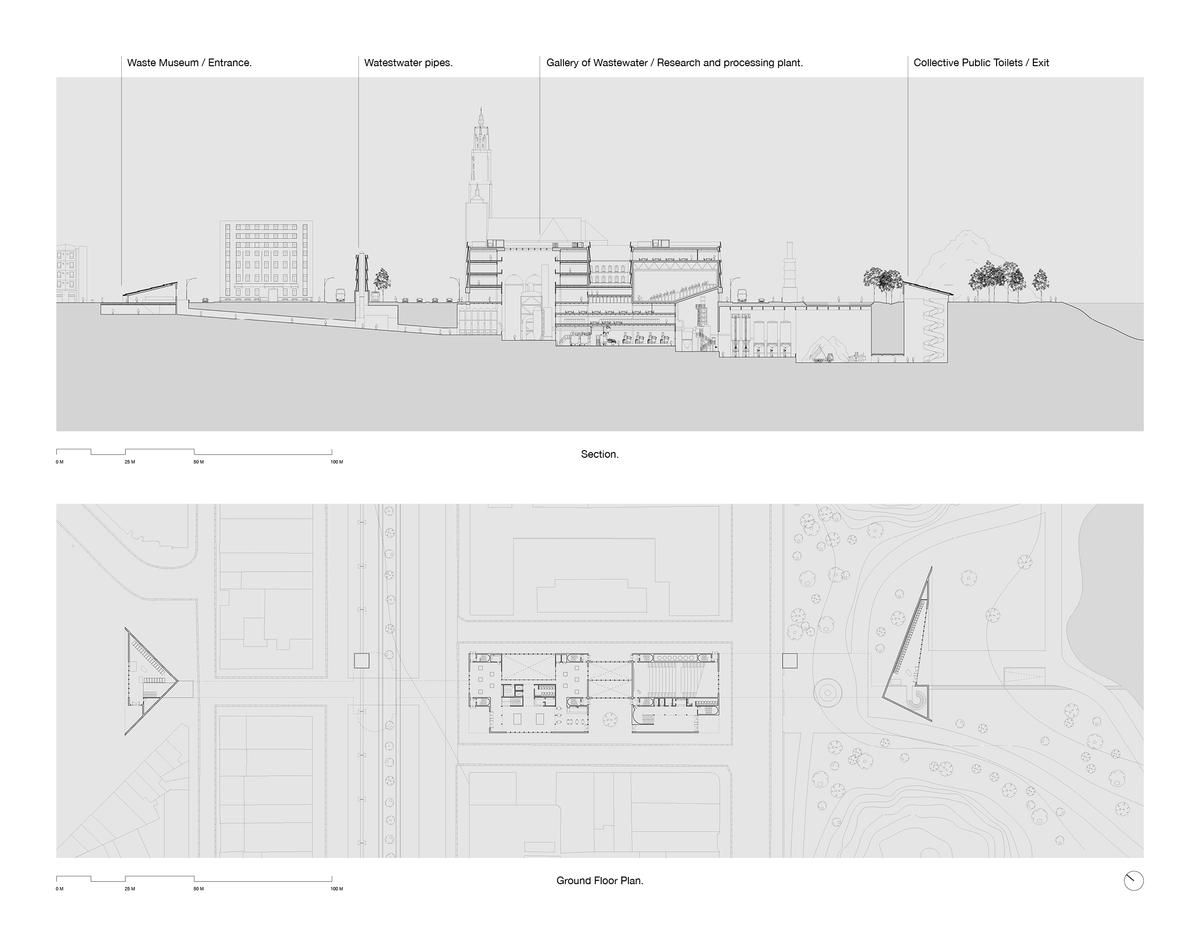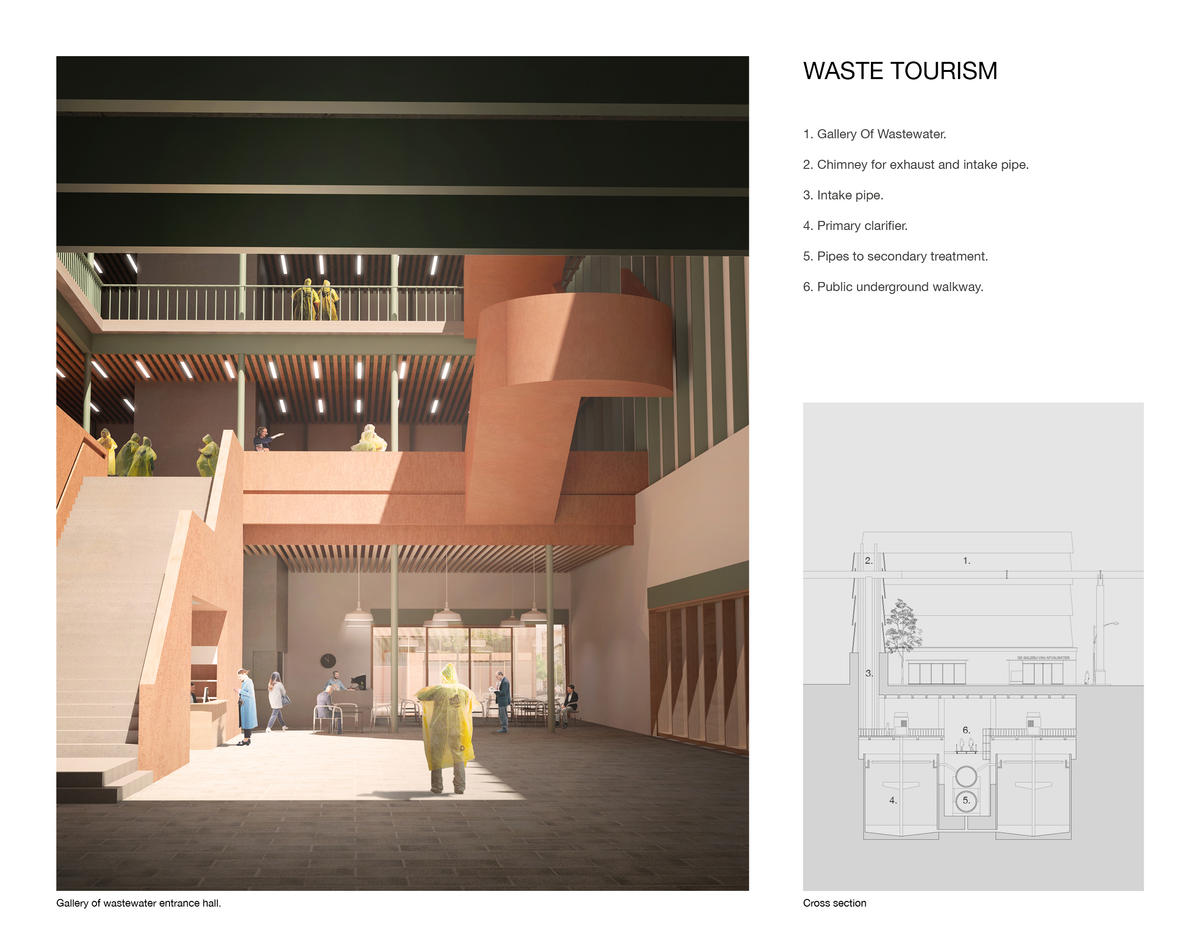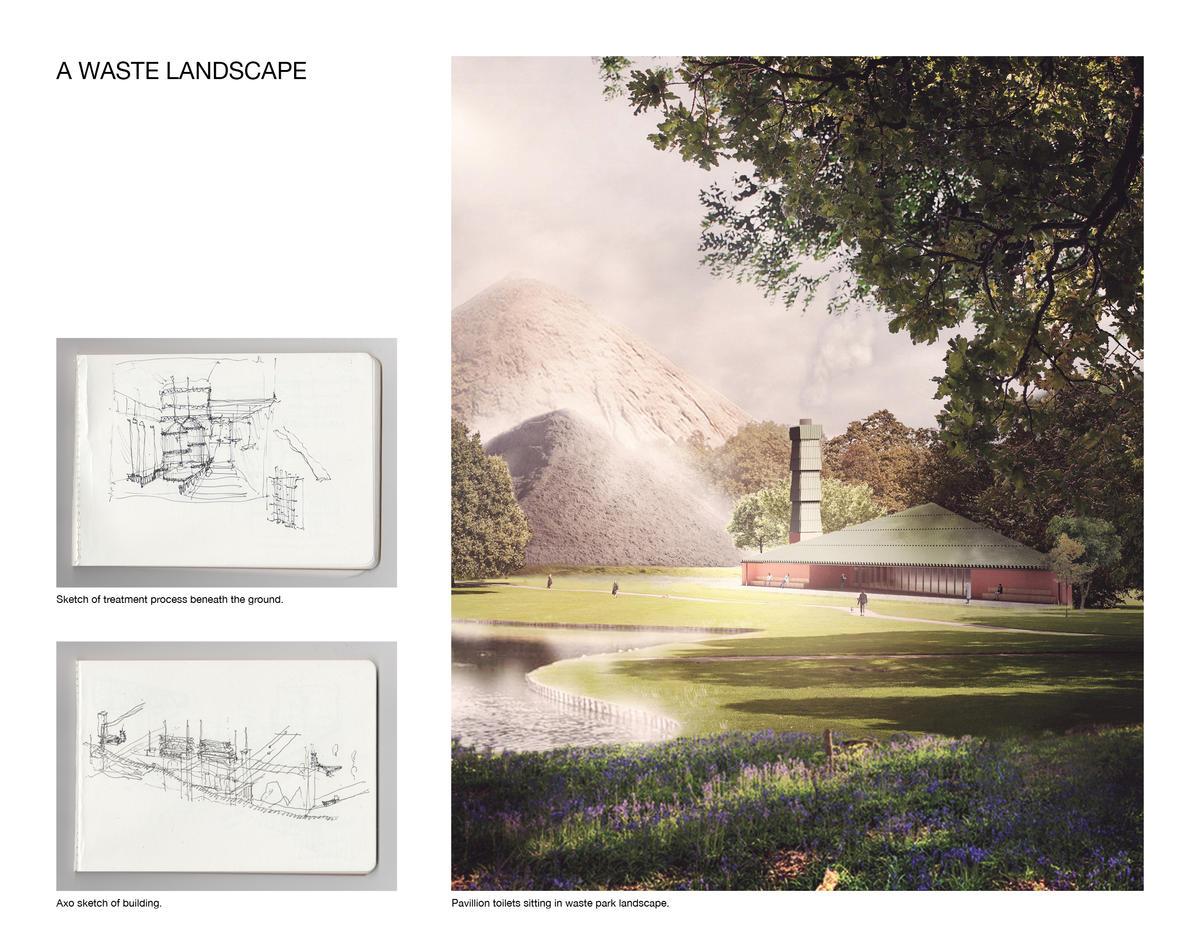Murray Morrant
Against Aseptic Corporeality






Gallery Of Wastewater Entrance
This thesis investigates our relationship to our bodily excretions, using this subject matter to open up a broader conversation about the long term consequences of our contemporary hyperindividualism.
School/Level
Category
- Community and Culture
- Industrial and Process
- Infrastructure
- Urban
- Education
- Parks and Gardens
- Speculative/Futures
Year
This move away from the collective is illustrated by the changing relationship with (human) waste. The individual forgets that consumption, which has become a predominant element of all our lives, results in waste. Brought on by the introduction of municipal sanitization and the flushing toilet was the idea that waste can be moved into unconsciousness resulting in today’s ‘flush and forget’ culture where waste is disposed of, for someone else to deal with. Serviced by an invisible infrastructure beneath the ground.
We now deal with our waste in the style of a chemical plant located in an industrial estate outside the city, taking all emotion and physical involvement away from the subject. It is no longer visible in our day to day lives and is now encased in anonymous architecture, hidden away from public view, and no longer celebrates the process of extracting its value.
Situated in the city center of Antwerp the thesis proposes a building to reveal this invisible infrastructure, allowing the individual to see their contribution to the collective and to reestablish a physical bodily connection to their natural 'waste'. the main building stands as a research facility and wastewater treatment plant, determining new ways to turn our 'waste' into a valued commodity. The end structure is a large public toilet situated in a place for leisure - a waste landscape. This landscape is constructed from the nutrient-rich byproducts produced by the treatment plant.